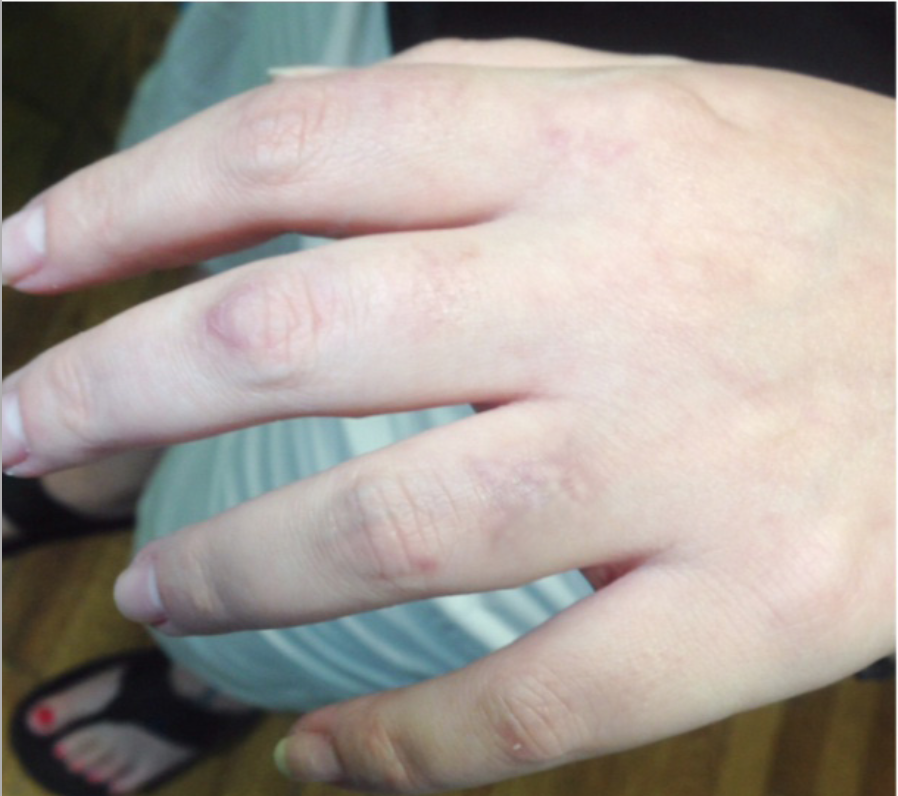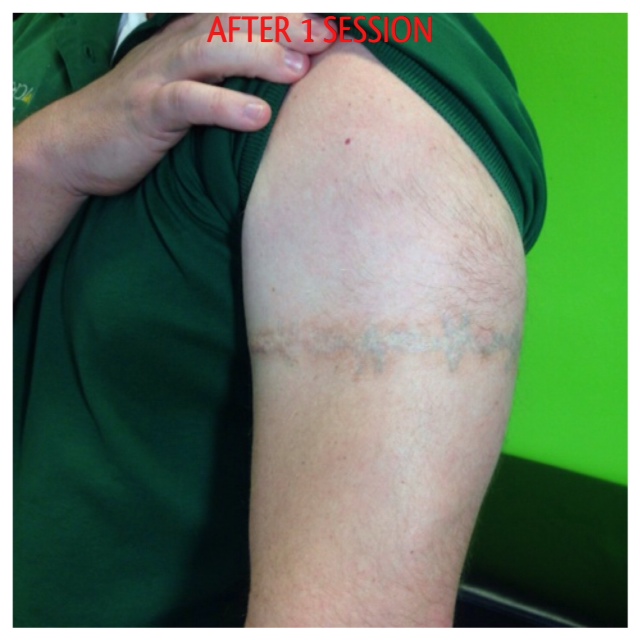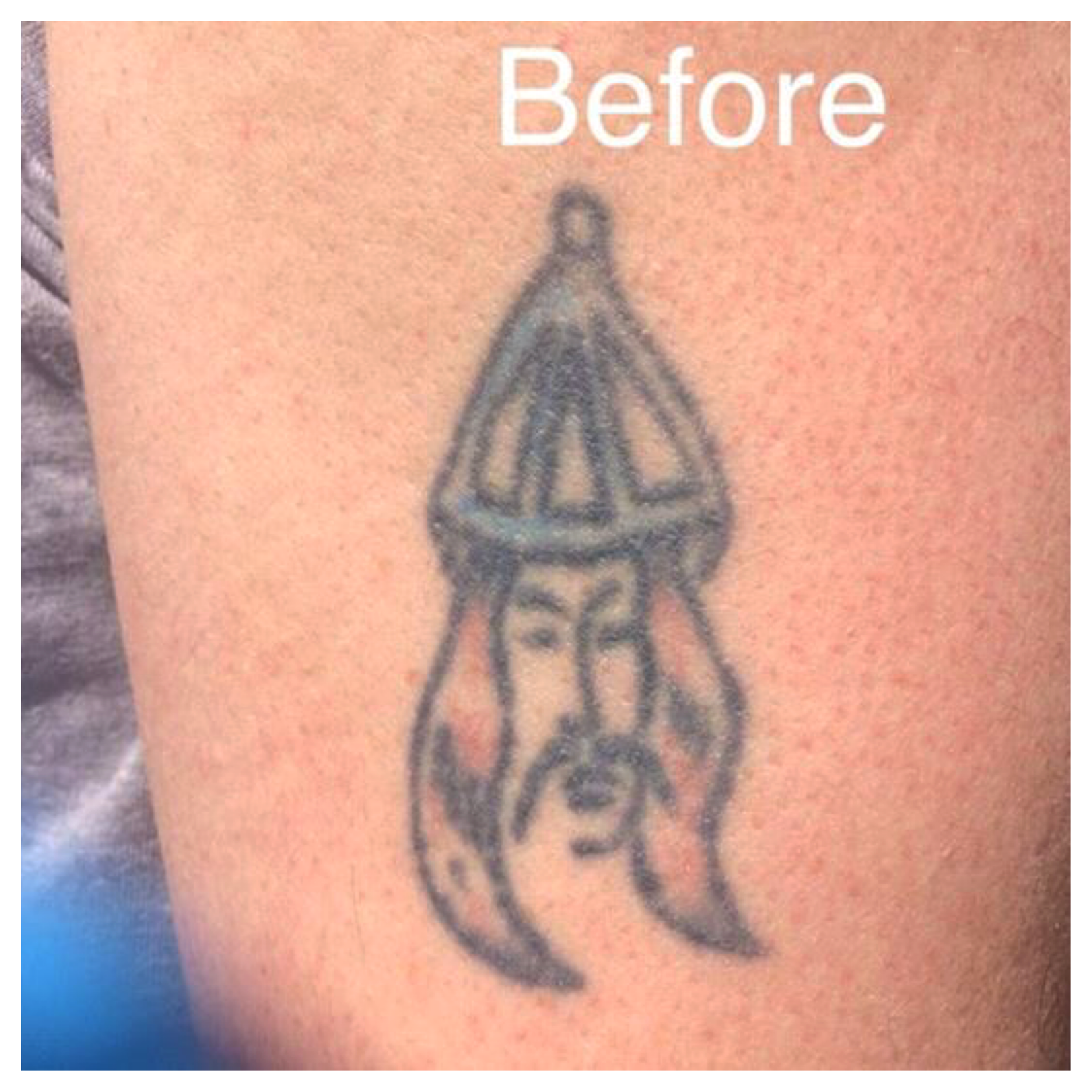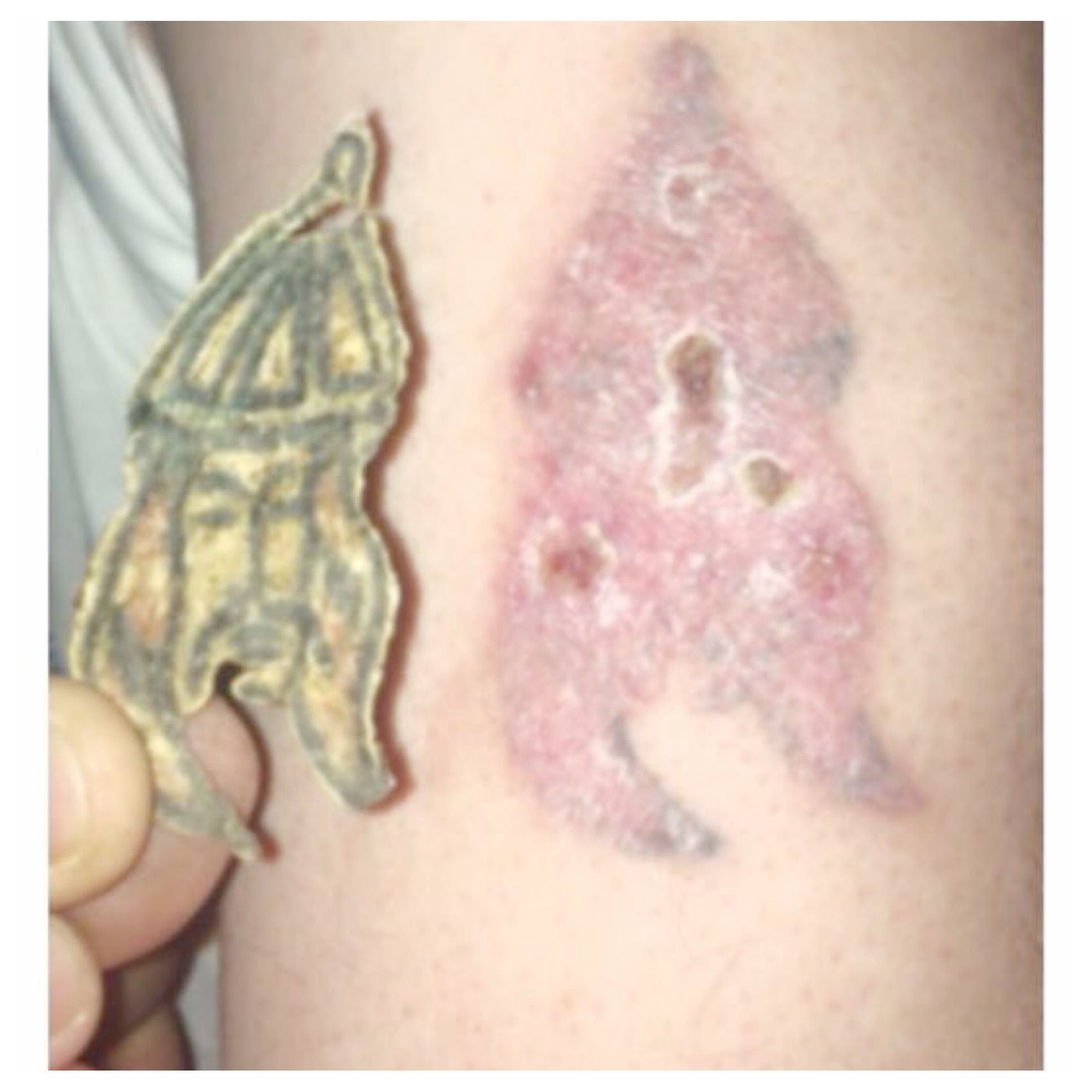CASE STUDY 1: finger body art removal
Case study 1: Finger body art removal
healing progression (30 days)
Case study 1: Finger body art removal
photograph after healing fully completed (3 months)
top left: “before” photo
top middle: immediately after 1st treatment
top right: early scabbing; stage 1 aftercare
bottom middle: scab fell off; stage 2 aftercare
bottom right: partial healing; stage 2 aftercare
CASE STUDY 2: neck body art removal: cross and wings
Case study 2: Neck body art removal
“before” photograph
Case study 2: Neck body art removal
immediately after treatment cycle 1
Case study 3: Neck body art removal
after 2 weeks of stage 1 aftercare (scab present)
Case study 2: Neck body art removal
photograph taken after healing completed (in this case 6 weeks) and ready for the 2nd treatment cycle
CASE STUDY 3: barbed wire body art
Case study 3: Barbed wire body art
“before” photograph
Case study 3: Barbed wire body art
Photograph taken after stage 2 after care. The subject has healed completed after a single session of dermal lift treatment and is ready for cycle 2
CASE STUDY 4: Genghis Khan body art peel
Case study 4: Genghis Khan peel
“before” photograph
Case study 4: Genghis Khan peel
soon after day 24, the whole tattoo peeled off and stage 2 after-care began
Case study 4: Genghis Khan peel
The final photograph shows the effect of the stage 2 aftercare treatment.
The body art zone was completely lightened and ready for the 2nd cycle of treatment or replacement artwork
CASE STUDY 5: POST LASER: ongoing treatment where 12 painful laser removal sessions have failed to remove the body art
Case study 5: Dragon body art post laser
“before” photograph
Case study 5: Dragon body art post laser
“before” photograph close-up
Case study 5: Dragon body art post laser
Day 5: scabbing has occurred; stage 1 after-care
Watch this space for future photographs in this intriguing case study.
The tattoo is over 15 years old. The ink pigments have been pushed deep into the dermis by the 12 laser treatments over a period of 2 years, so the removal process is expected to take a little longer than is normally necessary.
However, the initial scabbing process went well and the 2nd cycle of treatment will see a focus on the areas which did not scab as well the first time around.
















